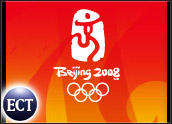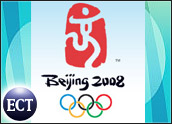
Major IT companies are fashioning themselves into leading worldwide proponents of clean technology as they put into use a growing battery of tools that can reduce organizations’ carbon footprint — while at the same time increasing the power, efficiency and flexibility of IT systems’ architecture.
While virtualization and more energy-efficient heating and cooling systems are proving to be potent agents in the IT industry’s green and clean tech toolbox — as Part 2 of this series discusses — there are a host of others.
Thanks to recent advances in technology and new incentives, IT companies are making use of cleaner sources of electrical power, such as solar photovoltaic and hydrogen fuel cells. They are deploying wireless sensor networks capable of providing more efficient environmental management of conditions and resource usage within offices, manufacturing facilities and data centers.
Also, they are looking to take on the problem of e-waste through take-back, reuse and recycling programs, as well as designing products from a broader “cradle to grave” perspective.
Building a Virtuous Circle
Government-industry collaborations, such as that between the IT industry and the U.S. Department of Energy (DoE), are building a virtuous circle of activity that is leading to significant advances through development across a wide range of renewable energy and clean technology.
“Much of DoE’s work with the IT sector has focused on improving energy efficiency in data centers. Working closely with ‘The Green Grid,’ a consortium of IT sector companies, DoE is helping to identify strategies that can improve efficiency over the long term — by as much as 10 percent by 2011,” Kevin Brosnahan, spokesperson for the DoE’s Office of Energy Efficiency and Renewable Energy, told TechNewsWorld.
The DoE is taking an integrated approach in examining all aspects of data center operations and looking to find ways to reduce energy consumption and make use of renewable energy sources, including server function, heating ventilation and air conditioning, building construction and electricity use, Brosnahan explained.
DoE-IT industry cross-pollination is also taking place with regard to making use of distributed electricity generation and the revamping of the nation’s aging power grid into a smart grid that makes use of a new generation of digital switching technology.
“Distributed generation is attractive; and for renewable energy, it is increasingly attractive,” Brosnahan elaborated.
“Net Zero Energy Homes will make use of distributed generation technologies like photovoltaic solar panels and geothermal heat pumps to generate energy on-site. For commercial applications, there are already some data centers that are using fuel cells to generate electricity,” he said.
From Semiconductors to Solar Panels
The growing green IT movement is one focal point for Springboard Research. The average spending by IT vendors on green initiatives, according to the company’s research, is spread across four broad categories: energy efficiency (40 percent), recycling and disposal (30 percent), green manufacturing (25 percent) and others (5 percent).
“There are some natural cross-cutting benefits to be gained by integrating the IT and clean energy sectors,” said Pradeep Halwar, head of the NanoEngineering Constellation at the College of Nanoscale Science and Engineering. “One is in the manufacture of solar cells, in which equipment, processes and techniques can easily be leveraged from semiconductor manufacturing.
“That is why several incumbent semiconductor manufacturers are entering this market. Similar synergies exist in other areas of clean energy technology, including thermoelectrics and fuel cells. Cost reductions and increased performance, two metrics that are needed in the manufacture of solar cells, fuel cells and other energy storage technologies are already well understood in semiconductor manufacturing,” Halwar told TechNewsWorld.
IBM recently announced an innovative silicon wafer reclamation process that turns scrap semiconductor wafers into a form used in the manufacture of silicon-based solar panels. Pioneered at the company’s manufacturing facility in Burlington, Vt., the new process uses a specialized pattern removal technique to repurpose scrap thin discs of high-grade silicon used to imprint patterns that make finished semiconductor chips, explained Maureen J. Baird, business development, winback and solutions executive at IBM South Africa.
The new wafer reclamation process produces monitor wafers from scrap product wafers, an intermediate step of repurposed material that generates an overall energy in process savings of up to 90 percent for IBM, according to Baird.
The company now needs to purchase a lesser volume of ultra-pure silicon wafers to meet its manufacturing needs. When the monitor wafers reach the end of their useful lives they are sold to the solar photovoltaic cell manufacturing industry.
“Depending on how a specific solar cell manufacturer chooses to process a batch of reclaimed wafers they could save between 30 percent to 90 percent of the energy that they would have needed if they’d used a new silicon material source,” Baird told TechNewsWorld. “These estimated energy savings translate into an overall reduction of the carbon footprint — the measure of the total amount of carbon dioxide (CO2) and other greenhouse gases emitted over the full life cycle of a product or service — for both the semiconductor and solar industries.”
Tackling the E-Waste Problem
While interest in green IT is growing across the Asia-Pacific region, awareness is generally low and action is rare, according to Springboard Research’s findings.
However, “leading companies, including Hewlett-Packard, Microsoft, Dell, Ericsson, Philips and Cisco Systems have joined a United Nations initiative that aims to standardize world policy and legislative approaches to electronic recycling processes,” noted Chris Perrine, Springboard’s chief operations officer and executive vice president of sales and marketing.
“Dell has taken the lead in the area of Green IT as it is the only computer maker to offer consumers free recycling, whether or not they are buying a new Dell product,” Perrine told TechNewsWorld.
By the end of November, Dell plans on extending its recycling services to business customers in mainland China and Hong Kong. The company says it is on target to recover nearly 275 million pounds worth of used computers from customers by 2009.
HP provides a recycling service for all IT products for a fee ranging from US$13 to $34, according to Perrine.
“In addition, HP customers who recycle their old computers independently can get credit toward future HP purchases, which offset most of the recycling costs. HP aims to recycle as much as 1 billion pounds of hardware and supplies in 2007,” he said.
Apple has frequently been criticized for lagging behind in its environmental programs, Perrine noted. The company has a relatively low 36 percent score the Computer TakeBack Campaign — an international effort by a coalition of 16 top environmental groups to address the growing problem of computer e-waste — gave Apple for its disposal of computer equipment.
“However, Apple recently claimed that by 2010 it might be recycling significantly more than either Dell or HP, as a percentage of past sales weight. The company is also pledging that the e-waste collected in North America will be processed in the U.S. and not shipped overseas for disposal,” Perrine continued.
An E-Waste Recycling and Disposal Rundown
Lenovo started a free computer recycling service in mainland China in December 2006.
“As a result of this and other initiatives, Lenovo has gone from being perceived as one of the least environmentally friendly technology companies to ranking at the top of the list of 14 in Greenpeace’s ‘Guide to Greener Electronics,’ Perrine pointed out.
While IBM/Lenovo does not take back any computer equipment for free in other parts of the world, it does have a recycling program under which it will recycle any brand of IT equipment for a one-time charge of $30. “IBM also sells $1.7 billion of used computer equipment every year to reduce the need for manufacturing new hardware,” Perrine added.
For its part, Sun Microsystems has instituted a global take-back program. Customers have to pay the shipping costs to send used products to Sun and the company has committed to itself to ensuring that no more than 5 percent of its products enter landfills, a figure “well beyond the WEEE-mandated (the EU’s Waste Electrical and Electronic Equipment directive) 35 percent,” Perrine noted.
Cisco, meanwhile, takes back its branded products for free in EU countries, Norway and Switzerland, and for a fee and on an “as requested” basis in other regions as part of its take-back program. It also assists customers with the disposal of its own as well as competitors’ products.
“The company provides documentation about product disposal when the recycling process is complete. Upon request, Cisco also provides a Certificate of Destruction, which releases the customer from further liability for the equipment returned through the Take-Back and Recycle program,” according to Perrine.
The Green Technology Revolution, Part 2: Easing the Burden With Virtualization





















































